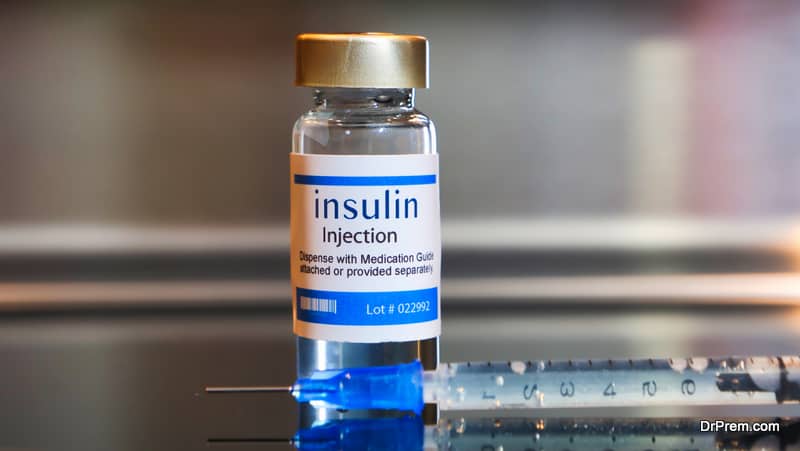COVID-19 pandemic, with its unprecedented mortality and morbidity, has impacted every aspect of human life. Aside from the health care system, its impact on the economy, lifestyle, and everyday activities has been profound. Having affected well over 80% of the US population and created ~$160 billion in economic burden, the COVID-19 pandemic has made a significant mark on the world. Driven by the need to improve individual health and reduce health care costs, healthcare providers are turning to innovative solutions to deliver high-quality care in a changing environment. One such innovative solution is continuous glucose monitoring (CGM) for diabetes management.
Over the last few years, the Use of CGM in diabetes management has gained popularity due to its benefits and the advantages it offers over the traditional finger pricking method. Capable of transforming the way patients with diabetes manage their disease, CGM has proven to be an effective tool in improving glycemic control and thereby reducing the risk of complications and hospitalizations. To give you a better perspective on the benefits of CGM and how it can help you manage your diabetes, in the following sections, we will discuss health care system vulnerabilities and how CGM is helping transform diabetes management.
Use Cases of Real-Time Continuous Glucose Monitoring to Transform Health Care During a Global Pandemic
In this increasingly technology-rich world, diabetes patients have been at the forefront of innovative medical practices and technological advancements. During the Covid-19 pandemic crisis, two areas of diabetes care became particularly interesting to researchers and practitioners alike: real-time continuous glucose monitoring (CGM) and the management of Type 2 diabetes using remote patient management.
Not only does using technology help you manage your Diabetes condition, but it can also lead to discounted life insurance rates. Life insurance with type 2 diabetes may be discounted 6% to 9% if you’re utilizing Diabetes related technology.
The use cases for these technologies are endless—in fact, they may become invaluable during times of high demand on health services or even an outbreak of illness. But let’s start with health care system vulnerabilities despite significant investment.
Vulnerabilities in the Health Care System Despite Significant Investment

It’s no secret that American health care is complex and burdened by systemic problems. This is very true for many diabetics that struggle to afford their life saving insulin. Many critics have pointed out that for all our medical knowledge, processes, and procedures, we’re still not doing right by patients—both inside and outside hospitals. In fact, even after allocating $100 Billion under CARES Act alone, Americans still find their medical needs often fall short. Moreover, during the peak of the Covid-19 pandemic, America reported the highest number of cases and death toll compared to other countries.
But what’s the reason? The answer lies within how the allocated funds were utilized. Through analysis of various health data sets as well as input from frontline clinicians, it becomes clear that despite significant investments made in research and development, US providers failed to sufficiently adopt new technologies or address long-standing issues plaguing their system. Furthermore, with 25% of the total allocated amount being wasted through fraud or in-efficient services, one could argue that these investments had a little tangible effect on overall patient outcomes.
A Catalyst for Change During Times of Crisis?
While critics are quick to blame governmental initiatives for the lack of progress on critical reforms needed in order to curb rising costs and improve quality care, others point out that deep-rooted structural issues are at play here. And they just might be right about one thing: major technology innovations tend to flourish only when there’s already an existing demand or need for them. For individuals suffering from Type-1 diabetes, devices such as real-time continuous glucose monitoring have been instrumental in better managing their disease—let alone reducing reliance on medications.
The Role of the Pandemic in Auguring a New “Digital Revolution” in Health Care

As news broke out of mass evacuations from low-risk regions, waitlists for critical services became longer, wait times for procedures longer still. Meanwhile, emergency rooms and hospitals were at their capacity, with patients queuing up day and night. Thus, health care providers found themselves in a paradoxical situation. On the one hand, they had limited resources to deliver the best possible care, while on the other hand, more money was being thrown at them without consideration of long-term goals or return on investment. In short, it came down to adapting—quickly.
In many cases, doctors did just that by turning existing technology into vital medical equipment for patient monitoring during pandemics—all from scratch. A few brave innovators even offered low-cost real-time CGM devices for free to diabetes clinics around America. By increasing access to these technologies when they were most needed, innovators throughout the American health care system showed what happens when we focus on radical changes rather than incremental improvements.
This is not to say that existing technologies weren’t useful in some way but rather highlight how limitations in implementation led to limited benefit accruing from these investments. It is not about whether funds were well-spent or not but instead how effectively they could be put to use. Something truly disruptive might have been needed – an event triggering a new wave of technological innovation in diabetes management.
Understanding the needs of today’s diabetic population, all-hands industrial and medical communities collaborated with each other and came up with an efficient diabetes care model which is poised to transform how we deliver diabetes management in both emergency and non-emergency situations. In fact, today digital healthcare market is supposed to be well over $100 Billion, boasting a nearly 30% compounded growth rate by 2025. Concurrently, 3 large-scale pilot studies have been initiated by the central government providing free access to hundreds of thousands of diabetics – effectively democratizing these services for those who need them most. This is just one small step towards creating a national health care system that puts patients first while helping reduce overall costs for the country as a whole—but it’s still significant change, nonetheless.
CGM Use in the Community During Lockdown Due to COVID-19
When it comes to dealing with an unknown crisis, medical professionals are often forced into using their own discretion when deciding which steps should be taken next. By rapidly prototyping devices that can be used by hospitals and clinics during pandemics, CGM (real-time continuous glucose monitoring) is poised to revolutionize how we manage patients suffering from or at risk for diabetes. Data captured by these devices give clinicians on-the-ground information they need about how individual patients respond to medication or stress—information which was previously hard if not impossible to get on such short notice.
In essence, CGM is designed with one primary goal in mind—to predict a patient’s glucose level. By continuously tracking blood sugar levels in real-time, clinicians can identify trends earlier than ever before and respond appropriately without having to wait for results from laboratory tests. Even more impressive, these devices work even when the cellular network is down due to structural damage or lack of power.
Article Submitted By Community Writer




